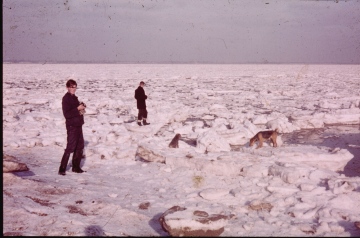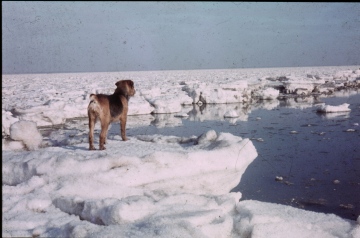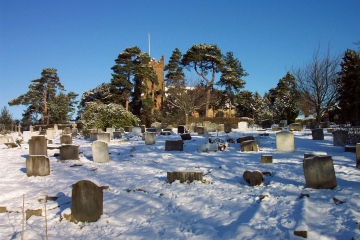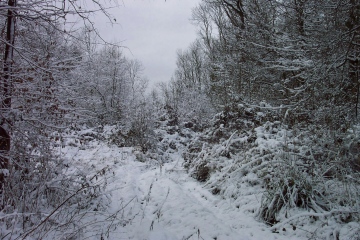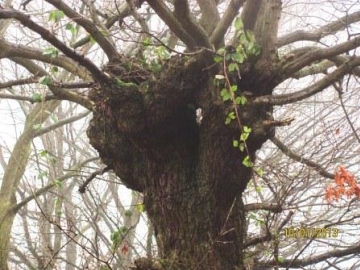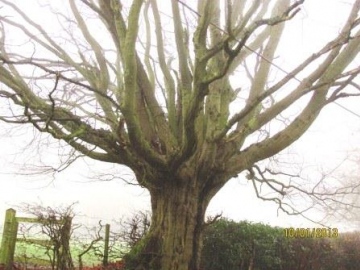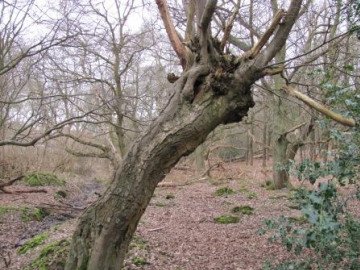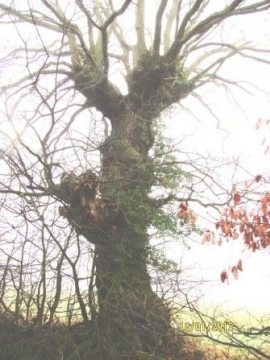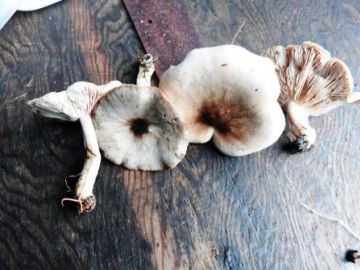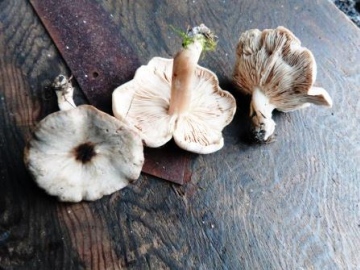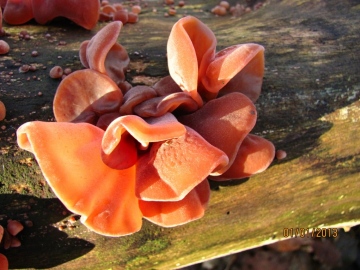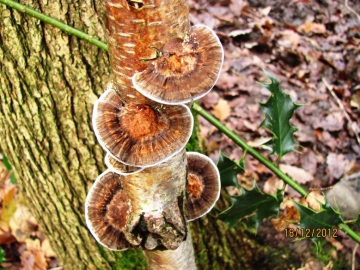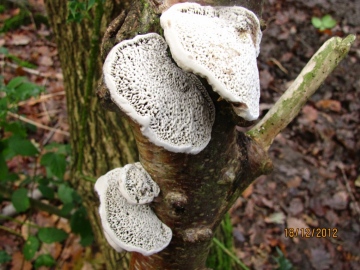Your Forum
The weblog below is for naturalists to use to report interesting sightings, ask questions, report on field meetings and generally post pictures and any information or questions generally relevant in some way to the wildlife and geology of Essex. You will need to register and be logged-on to post to the forum, and you need to upload pictures first, for use in posts. Find out more
|
Thu 31st January 2013 14:54 by Peter Harvey
This is a money spider (Linyphiidae), possibly an Erigone species, but it is not possible to identify even to genus level without microscopical examination. Wed 30th January 2013 20:53 by Peter Pearson Unknown spider This small spider appeared on my hand while attempting to photograph our local robin in full song. It was about 2-3mm in length, the body appeared shiny black, but with a green sheen to it. The euonymus shrub that I was standing beside was its probable habitat. I cant find a likely candid for this creature can anyone put a name to it please. Wed 30th January 2013 19:40 by Peter Pearson Bullyboy Fieldfare 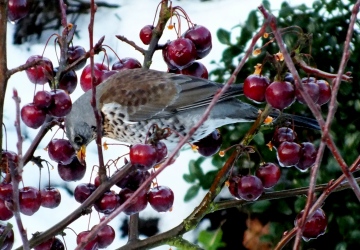 Every year as soon as the first snows fall we have a small flock of Fieldfare (Turdus pilaris) and Redwings (Turdus iliacus) visit the area. The attraction is the aging fruit trees in the gardens to the rear of ours. They are un-pruned, making reaching the top-most fruit difficult, leaving them to fall off during the winter. Last year the trees suffered from the weather and produced fewer fruits than usual. Consequently there were no flocks only a singleton fieldfare. As there are no apples, it has taken over our 3-4ft tall crab apple, which against the trend was loaded with fruit. This has led to conflict with the incumbent blackbirds, infact any smaller fruit eating bird that dares to enter the garden. As I had never noticed this kind of behavior before,I made a the search of the web where on the RSPB forum there were others noting the bully boy tactics and quoting them to be a one bird food barrier. Sun 27th January 2013 16:21 by Graham Smith Winter, what winter?
A little bit of snow and the media once more go into overdrive. Chaos and disarray is the image they portray, with endless shots of abandoned vehicles on motorways, cars slithering on ice, grit lorries in ditches, pedestrians tumbling on slippery pavements, overworked A & E departments (but not as overworked as on an ordinary Saturday night!) and of animals stranded in snowy wastes. They must have driven for miles to find the last named as given the accuracy of short term weather forecasts nowadays most farmers would have brought their animals on to lower ground long before the snow arrived. The BBC even went so far as to send one of their film crews to high ground on one of the motorways during a blizzard, where they obligingly remained marooned all night, a local family having the kindheartedness to put them up. Given all the hyperbole, I thought you might like to see these two photographs taken during a real winter, 1963. They depict the River Blackwater at Bradwell St Peter's and are in the collection of Kevin Bruce, a local historian from Tillingham, who has kindly given me permission to use them here.
The guy in the foreground is Malcolm Chettleburgh, the one behind possibly Alan Old. Malcolm was one of the founder members of Bradwell Bird Observatory (in 1953) and rented Linnet's Cottage (in the grounds of which the Bird Hut stands)as a holiday cottage for over fifty years after the last occupant, Walter Linnet, died in 1958, only transferring the lease to another of our members in the past few months. It is thanks to him that the the Observatory has survived so long and continues to flourish. The dog, by the way, was called Squeak and the scene beyond him depicts ice flows moving along the River Blackwater. And they dare call this a hard winter! Actually, events have already moved on, the thaw has set it, a wet and windy week ahead is forecast and they are already chattering excitedly about floods! That having been said, I am not so fond of the icy weather as I used to be. I don't bounce like I used to! Age creeps up on you. Some young guy offered me a seat on the train the other day. I looked around me in confusion, wondering who the hell he was talking to, then realised it was me! I wasn't sure whether to be pleased or outraged but I took up his offer with good grace. How did this age thing happen? Still, when the air is still and the sun is shining it is still a pleasure to walk in the snow with friends. One such day was 17th, when we visited Holbrook Bay on the Suffolk side of the Stour to help the Wildlife Trust with a low tide wader and wildfowl count. It was -8`C when we got out of the car at Stutton but gradually warmed up thereafter and at the end of the count we sat on the fallen trunk of a Holm Oak, basking in the warm sunshine as we ate our lunch. There were lots of Great Crested Grebes, Mergansers and Goldeneye diving for smallfry close inshore, together with at least three Slavonian and one Red-necked Grebe, and waders such as Dunlin, Grey Plover, Redshank, Curlew and Black-tailed Godwit (including an Icelandic colour ringed bird) feeding almost at our feet. There was even a Lesser Spotted Woodpecker 'drumming' from the trees along the shore. A few days like that makes the winter go quicker. Walking locally is also a pleasure, although there seem to be more birds in my garden than in the surrounding countryside nowadays, three Siskins and two Lesser Redpolls having joined the Goldfinches and Chaffinches on the feeders while Fieldfares and Mistle Thrushes have been squabbling over the ownership of a berry bearing Holly bush in a neighbour's garden all week. The following two shots were taken a few years ago, one of Fryerning Churchyard, the other of Bushy Wood, Margaretting, but both looked just as beautiful this week. PS: I have just heard that an antique Windsor Chair, known as a Smoker's Chair, worth around £200, has been stolen from the church this week so I suppose it will now be closed to the public, except for services, like so many others. The last theft was of the Lych Gates. They turned up in a drug dealer's house in Romford (they are now bolted on), so perhaps the chair is destined for the same fate. Sad. Sun 20th January 2013 15:28 by Graham Smith January 8th-14th
My state pension is now but three months away so I thought it was about time to start writing my magnum opus(!), a Flora of Ingatestone and Fryerning, that will hopefully be published in the EN. As part of that work I have been surveying the remaining pollards in the parish, a pleasant task as they are trees of great character, like this old Oak at Beggar Hill. I could easily indulge in a bit of pollard hugging! They are
also brilliant for invertebrates and other wildlife but, sadly, as they are no longer cropped (the 1939-45 war seems to be the last time the wood was harvested on a large scale) they are all becoming top heavy and one by one succumbing to winter gales. A prime example is this mighty roadside Hornbeam, also photographed at Beggar Hill - you can almost hear it groaning under the strain! They would never have been allowed to grow to this size when they were being actively harvested; a more typical example would have been this Hornbeam pollard on Mill Green Common. At one time this was managed as a wood pasture and there is a record from the early 1800s of 800 pollards being 'falled' (or cropped) one year. The Common is only around 60 acres and you would never have got eight hundred of the larger trees to fit in! The density at Mill Green was nothing compared to some other commons and Mark Hanson tells me that there are records of 700 pollards to the acre at Epping! This tree is one of the very few left on the Common from the old days; most of it is now covered by secondary woodland, the sad fate of many of those in Essex. My final tree is a so-called 'giraffe' pollard, named for obvious reasons. This one too was photographed at Beggar Hill. I'm not sure why they were cropped so high as giraffes are scarce locally and it must have made them very hard to harvest, but they are not uncommon in the area. It remained relatively mild for much of the week and on the 9th I was able to sit on a commemorative bench along the seawall at Blue House, soaking up the warm winter sunshine for over an hour. Three days later found me huddled on the seawall at St Lawrence Bay for five hours, counting waders, my body encased in the heaviest of my winter coats and padded trousers, an EWT woolly hat pushed down over my ears and my hands struggling to stay warm inside two pairs of gloves. Felt like a knight in medieval armour and was just about as mobile but this paraphenalia did keep out the worst of the easterly wind. Remarkably, despite the cold a small group of fungi were flourishing among the grass near where I sat. They later keyed out as the Smoky Cavalier Melanoleuca excissa, a member of a family with white gills and warty spores. When fresh picked the caps were darker than the ones seen here but this species is hygrophanous (as we say in the trade), that is, drying paler with age. I hope to add these to the Club collection at Wat Tyler. Thu 17th January 2013 21:46 by Peter Pearson Soon be Spring
Hi Graham and all and a belated Happy New Year too. It’ s strange that as soon as something is said about the weather it suddenly does a U-turn. Prime example the drought last year, the mention of a hosepipe ban and the heavens opened. You said about it being mild and wham a white carpet. It did look spring like though with the daffs breaking ground and the snowdrops in bud, we even had leaf burst on the ornamental elder and a honey bee or two searching the garden for the odd blossom. Don’t knock the collared doves we used to have about 18 visiting us, now we are down to three. Although we put out food, our garden bird numbers are virtually nil, the odd chaffinch and greenfinch, two or three sparrows, the odd dunnock, a couple of robins and a few blackbirds. We seem to have two problems, someone nearby has a flock of about 50 tame pigeons that strip the feeders as soon as they are filled and there are also sparrow hawks in the area that make passes through the gardens taking prey as they go and scaring off the rest. Haven’t been out much recently, just a brief visit to The Walls where there were plenty of waders and wildfowl. Look on the bright side spring is just around the corner. Tue 15th January 2013 16:46 by Peter Harvey
Hi Graham, Yes I'm out here at least. Waiting for the spring to start whilst I try and catch up with all the winter jobs! Mon 14th January 2013 17:03 by Graham Smith January 1st - 7th 2013
Is there anybody out there? Belated New Year greetings if there is! A mild start to the new year; better for birds (especially after the terrible breeding season last summer) and better for bird-watchers, especially those of a certain age. Wet though - squelchy everywhere. My walking boots - new in 2011 - are already about to expire. On New Year's morn there were 60 Goldfinch, 25 Chaffinch, 12 Greenfinch and 25 Collared Doves on my bird-feeders (I seem to have attracted every ruddy Collared Dove in Ingatestone since I fitted trays - on which they can perch - beneath the feeders) but only a couple of Blue and Great Tits (the result of that lousy nesting season) and but a solitary House Sparrow. The last named were known as Sprogs in my bird-ringing days and "ring and fling" was the policy when dealing with them as, post breeding season, they use to foul up the nets in droves - a hundred a day was not unusual. Now they are red-listed and I'm chuffed to bits if I get a pair nesting in the garden!
Visited Southend Pier on 5th. The sprat shoals were in and there were plenty of Red-throated Divers and Great Crested Grebes feasting on them. Also several Guillemots feeding close to the pier-head. Watched three Great-Black-backed Gulls mugging one of them. They pounced on it as it resurfaced after a dive and one of them dragged it into the air by one wing. The poor old Guillie promptly regurgitated its last meal and the gull dropped him back in the river as it pounced on this offering. The Guillie dived and resurfaced thirty seconds later about fifty yards away, apparently unharmed. A lucky escape as Great Black-backs regularly kill and disembowel smaller seabirds. At Blue House Nick's cat brought in a Slow-worm on Friday (which was released unharmed in the compost heap) and 'Butterfly Bill', one of the reserve regulars, saw a Common Lizard out and about on New Year's Day, both bearing testimony to the unseasonal mild weather. Two species of Waxcap were still fruit on the opening day of the year at Fryerning Churchyard - Scarlet Hygrocybe coccinea and Snowy H. virginea - and a couple of Deceivers Laccaria laccata were still producing spores on my garden lawn. Among the commoner bracket fungi on view this week have been Jelly Ear Auricularia auricula and Birch Mazegill Lenzites betulinus. The latter was photographed at Thrift Wood, Bicnacre during a work party. Have tried a dozen different ways over the years to make Jelly Ear edible but whatever I do I still end up with a plate full of elastic bands! If anyone knows the secret please let me know. |
Archives: May 2020Aug 2019 Jan 2019 Sep 2018 Jul 2016 Oct 2015 Jul 2015 May 2015 Apr 2015 Mar 2015 Feb 2015 Jan 2015 Dec 2014 Oct 2014 Sep 2014 Aug 2014 Jul 2014 May 2014 Apr 2014 Mar 2014 Feb 2014 Jan 2014 Dec 2013 Nov 2013 Sep 2013 Aug 2013 Jul 2013 Jun 2013 May 2013 Apr 2013 Mar 2013 Feb 2013 Jan 2013 Dec 2012 Nov 2012 Oct 2012 Sep 2012 Aug 2012 Jul 2012 Jun 2012 May 2012 Apr 2012 Mar 2012 Feb 2012 Jan 2012 Dec 2011 Nov 2011 Oct 2011 Sep 2011 Aug 2011 Jul 2011 Jun 2011 May 2011 Apr 2011 Mar 2011 Feb 2011 Jan 2011 Dec 2010 Nov 2010 Oct 2010 Sep 2010 Aug 2010 Jul 2010 Jun 2010 May 2010 Apr 2010 Mar 2010 Feb 2010 Nov 2009 Oct 2009 Aug 2009 Jul 2009 Jun 2009 May 2009 Apr 2009 Mar 2009 Feb 2009 Jan 2009 Nov 2008 Oct 2008 Sep 2008 Aug 2008 Jul 2008 Jun 2008 May 2008 Apr 2008 Mar 2008 Feb 2008 Jan 2008 Dec 2007 Nov 2007 current posts |



















